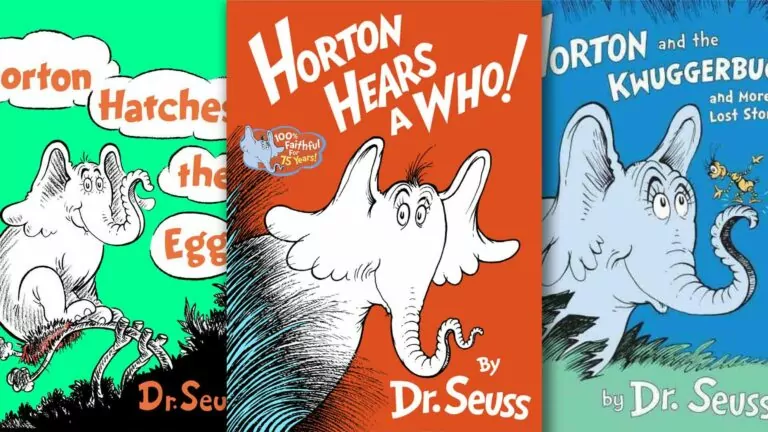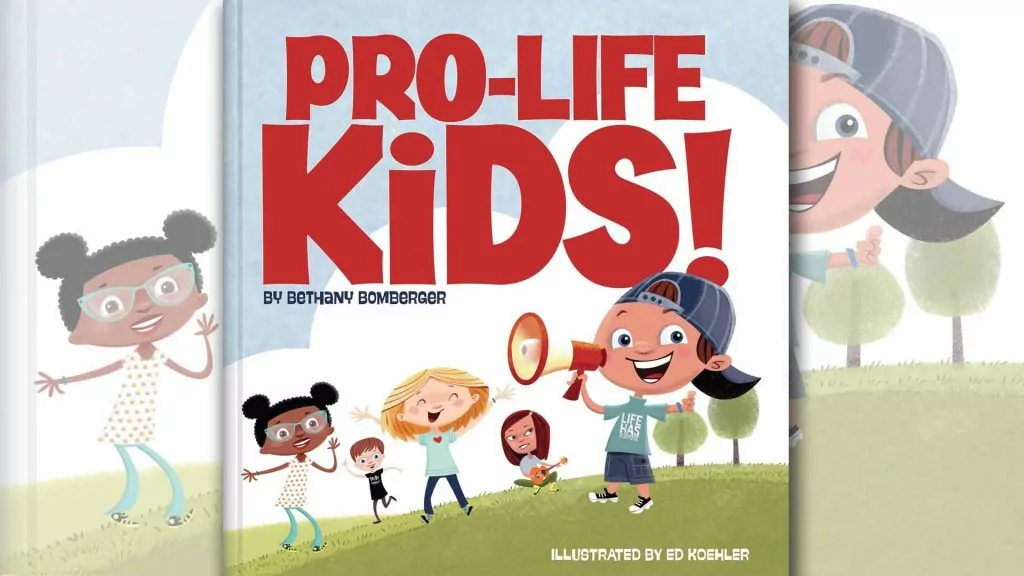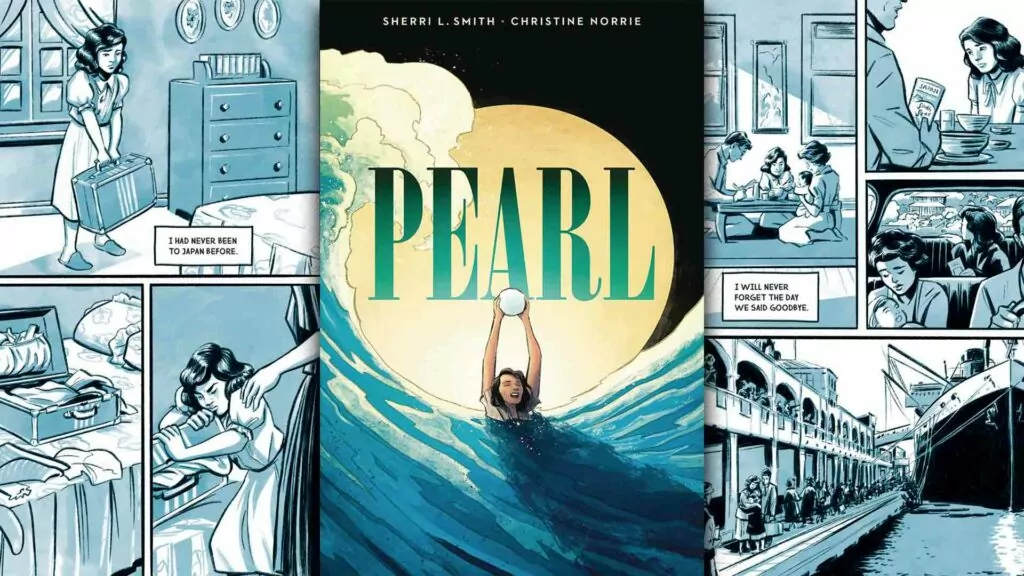Parents may be familiar with the first two of Dr. Seuss’ Horton books, but the third, only recently republished will be a new delight for many.
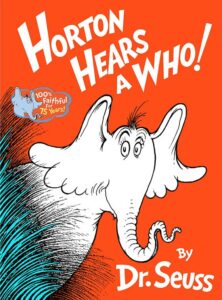 Horton hearts a Who
Horton hearts a Who
by Dr. Seuss
1954 / 72 pages
This was the last Horton story written, but ranks first in our hearts for its surprising pro-life message! With his giant ears, the elephant Horton is able to hear what no one else can: that there are tiny little people, – Whos they call themselves – living on what looks like a dandelion puff. They are too tiny to see, and for everyone else they are too tiny to hear, but as Horton knows, and as he often repeats:
“a person’s a person no matter how small.”
So, conscientious pachyderm that he is, Horton is determined to protect the little Whos, and their whole town of Who-ville. His friends think he’s crazy, and one in particular is so sure he’s nuts that she wants to grab the dandelion puff and burn it, to put an end to his delusion. It comes to a climax with Horton encouraging all the residents of Who-ville to make as much noise as they can so others will finally be able to hear them! Will their humanity ever be recognized?
Kids will love this for the rhymes and the charming hero, but pro-life parents can’t help but embrace Horton’s oft-repeated entreaty that “a person’s a person no matter how small.” His simple plea is so famous that it can be a tool in cultural conversations about the unborn since absolutely everyone has read Horton Hears a Who!
Might Christians be reading something into the story that the author didn’t intend? Quite likely. His second wife said the pro-life movement was hijacking the story for its own purposes. But whether Seuss intended it or not, his story makes a point worth hearing: that our worth is not dependent on our size. Christians have to take that further though, explaining where our worth does come from: being made in the very image of God (Genesis 9:6).
Horton hatches the egg
by Dr. Seuss
1940 / 64 pages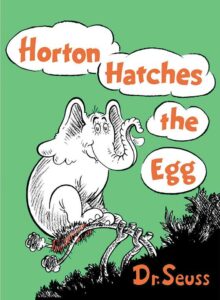
The start of the Horton trilogy isn’t as insightful as the third, but it is fun. In his first outing, the genial elephant is taken advantage of by a lazy mother bird named Mayzie. She says she just wants a quick break from egg-sitting, but once Horton agrees to take over, Mayzie takes off and doesn’t look back.
So, for day after day, Horton faithfully babysits the egg, roosting on the nest, at the top of the tree. As in Horton Hearts a Who, his friends aren’t supportive – they’re making fun of him again. And then hunters, startled by this strange sight of an elephant up a tree, transport him, tree and all, over the sea to put him in a circus. Horton has to endure the indignity, being displayed as a spectacle to crowds all over, but, as he repeats to all his critics:
“I meant what I said, and I said what I meant. An elephant’s faithful, one hundred percent!”
And that, there, is the attraction of this book – it is about steadfastness, and sticking to your word, even when others – where is that Mayzie? – just won’t. Children don’t need to worry, though, as both Horton and Mayzie get what’s coming to them in the end: the baby bird that finally hatches is half elephant!
Horton and the Kwuggerbug and more lost stories
by Dr. Seuss
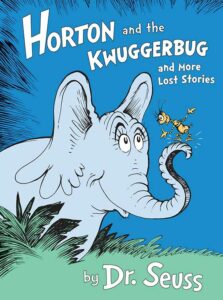 2014 / 64 pages
2014 / 64 pages
Back in 2014, reports came of a “new” Dr. Seuss book, to be published 23 years after the author’s death. It wasn’t new new, but rather rediscovered new, with work that Seuss had published in magazines before, but never in a book. It was to be a collection of four stories, all of which had first appeared in print back in the early 1950s.
The title tale features Horton once again being sorely treated, this time by a kwuggerbug, who promises to split some delicious beezlenuts if Horton will only carry him to the tree. It seems a deal when the tree seems near but in the end Horton is crossing crocodile-infested rivers, and climbing mountains and the trail just keeps going on and on. Then, in one final trick, the kwuggerbug “splits” the nuts by taking all the nut meat for himself and leaving Horton the shells for his half.
But once again, justice is done, this time via an unintentional sneeze. And while there is no great moral to this story, it sure is fun to see Horton this one more time.







